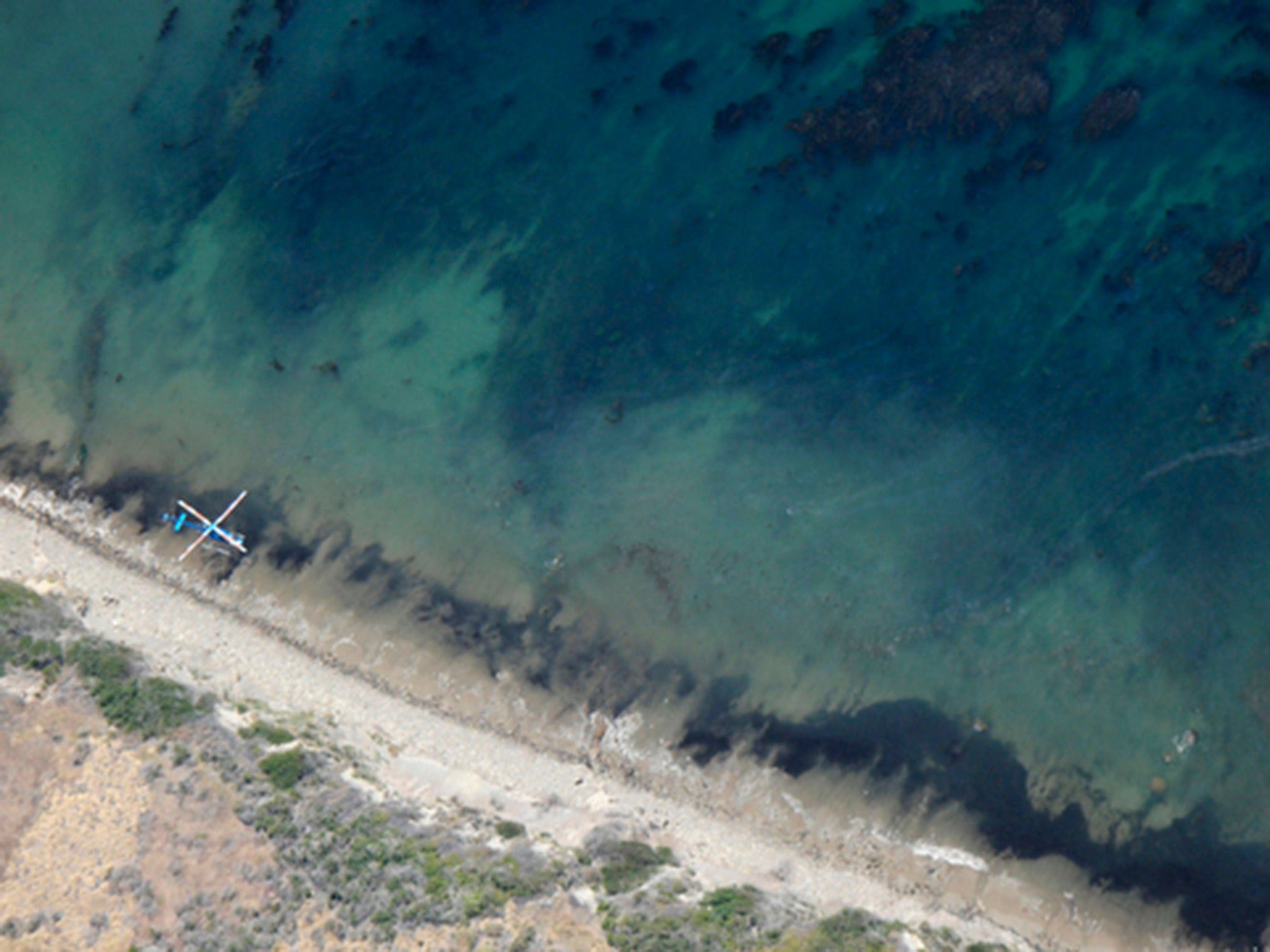California oil spill: Aerial images reveal devastation after over 100,000 gallons of oil spills into ocean
'Our thoughts are with the impacted Santa Barbara communities this morning, whose beautiful coastline has been devastated by this terrible oil spill'

From the air the oil shimmers, dark and sinister. On the ground, it is sticky and foul.
A series of images released by environmental activists have revealed the true crisis confronting a stretch of California coastline after more than 100,000 gallons of oil were leaked into the ocean.
As Governor Jerry Brown issued an emergency proclamation declared to speed the dedication of resources to the area, clean-up teams north of Santa Barbara embarked on a third day of efforts to remove patches of oil.
Greenpeace said it had hired a helicopter to enable a photographer to take aerial shots of what experts say is the worst spill in the area in decades. Reuters said that 300 people are working around the clock to scoop up oil using rakes, and hose down contaminated areas.
“Our thoughts are with the impacted Santa Barbara communities this morning, whose beautiful coastline has been devastated by this terrible oil spill,” said Greenpeace Executive Director Annie Leonard.
“Oil spills are never accidents. They are the direct result of substandard oversight of fossil fuel companies who put their profits above human and environmental impacts.”
She added: “Now is the time for our leaders to take responsibility for the oil companies they let run rampant in our country.”
Meanwhile, nine cleanup vessels are working on the ocean, six of them to to entrap the slick with booms and three others skimming oil from the surface.
In pictures: California oil spill
Show all 10Refugio State Beach and El Capitan State Beach, both popular seaside camping destinations, were to remain closed to the public through the Memorial Day holiday weekend. The area was also closed to fishing and shellfish harvesting.
The leak of oil came after a pipeline broke, leaking 105,000 gallons of crude oil, five times more than the initial estimate, according to owner Plains All American Pipeline.
The 24-inch-wide (61-cm-wide) pipeline, which runs underground parallel to a coastal highway west of Santa Barbara, inexplicably burst on Tuesday morning. Oil flooded down a canyon, under a culvert and onto Refugio State Beach before it flowed into the Pacific.
By Wednesday, a four-mile stretch of beach was blackened, and an oil slick spanned more than 9 miles of ocean, the US Coast Guard said.
Tuesday’s accident is modest when compared to the 1969 offshore well blowout into the Santa Barbara Channel that released an estimated 80,000 to 100,000 barrels of oil and stands as the largest spill ever in California waters.
The affected area lies at the edge of a national marine sanctuary and state-designated underwater preserve that is home to 25 marine mammal species and 60 species of sea birds, the news agency said.
But the Santa Barbara Channel and surrounding waters are also dotted with nearly two dozen oil platforms and hundreds of wells.
Wildlife teams were dispatched to rescue any animals injured by the spill. Authorities said they did not know the extent of wildlife harm, but photos showed oil-covered pelicans and other sea life washed ashore.
Subscribe to Independent Premium to bookmark this article
Want to bookmark your favourite articles and stories to read or reference later? Start your Independent Premium subscription today.

Join our commenting forum
Join thought-provoking conversations, follow other Independent readers and see their replies